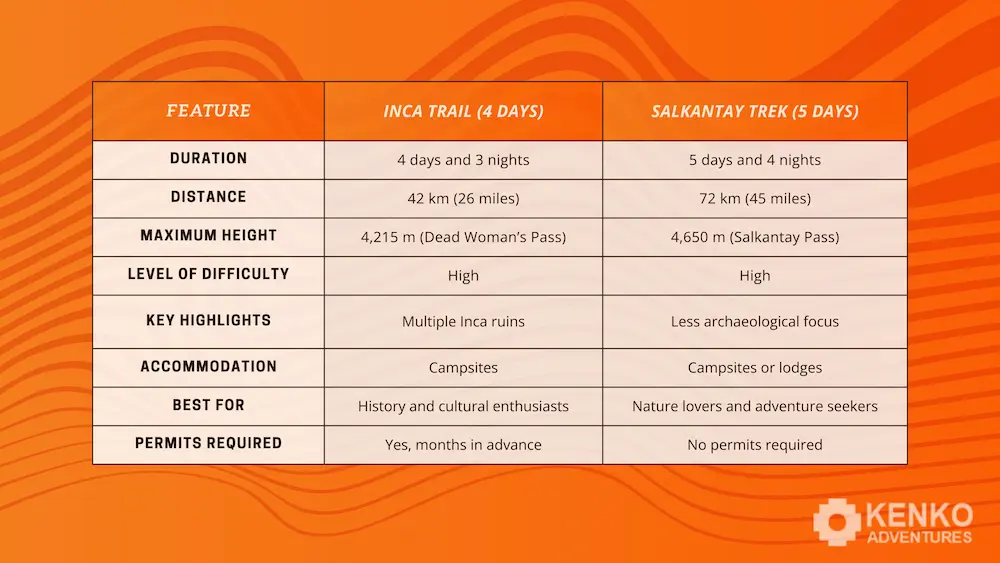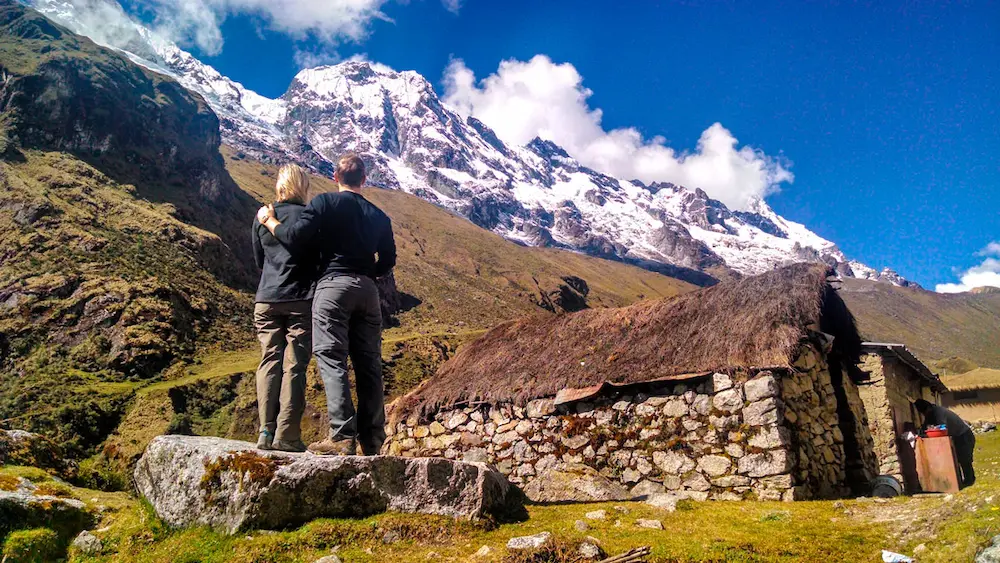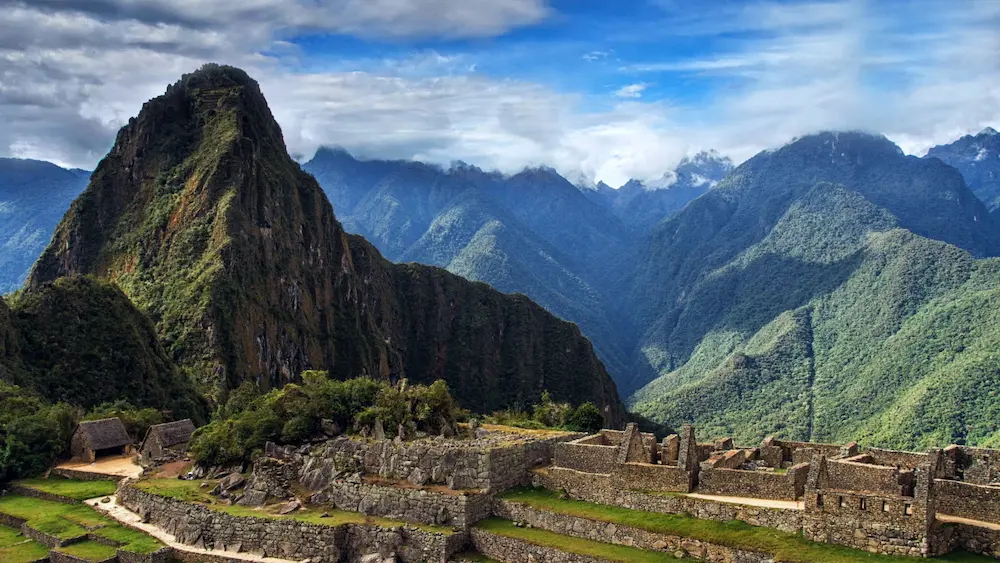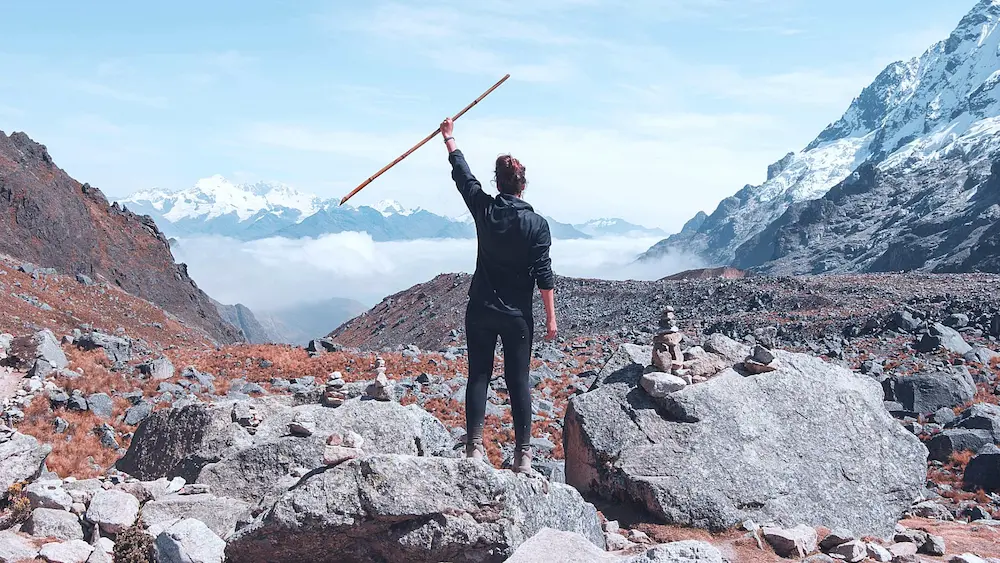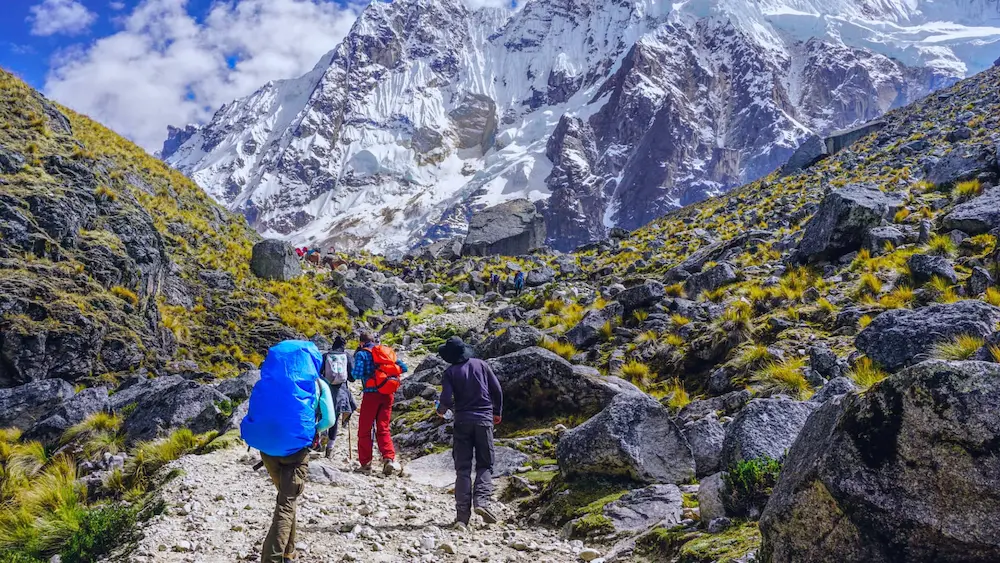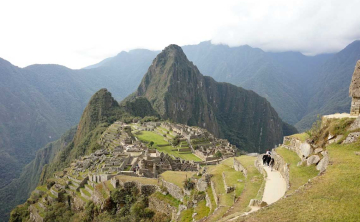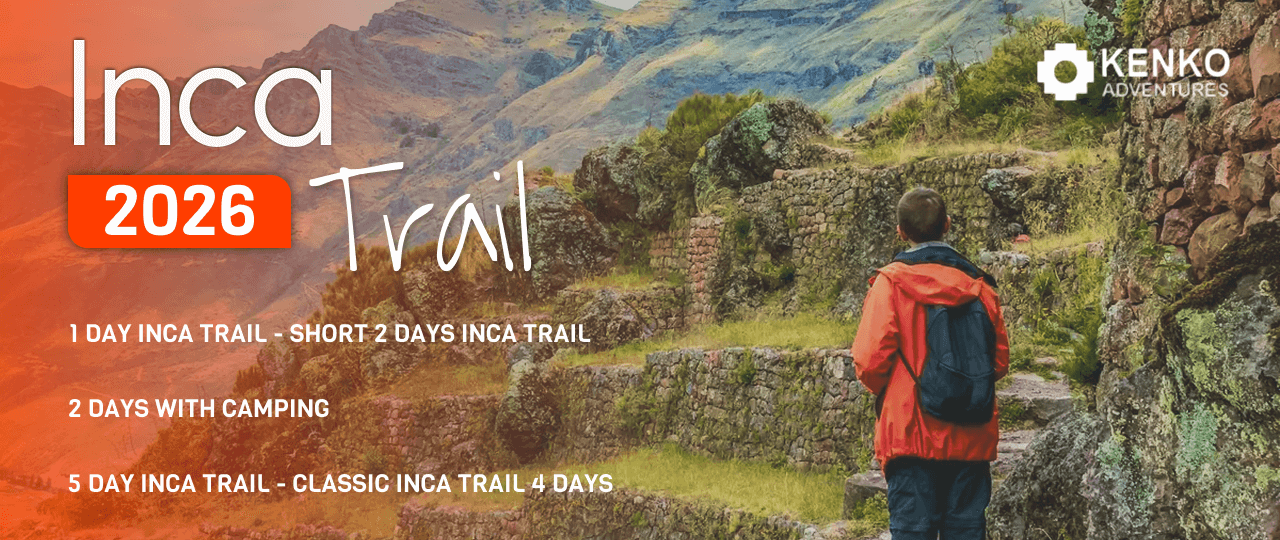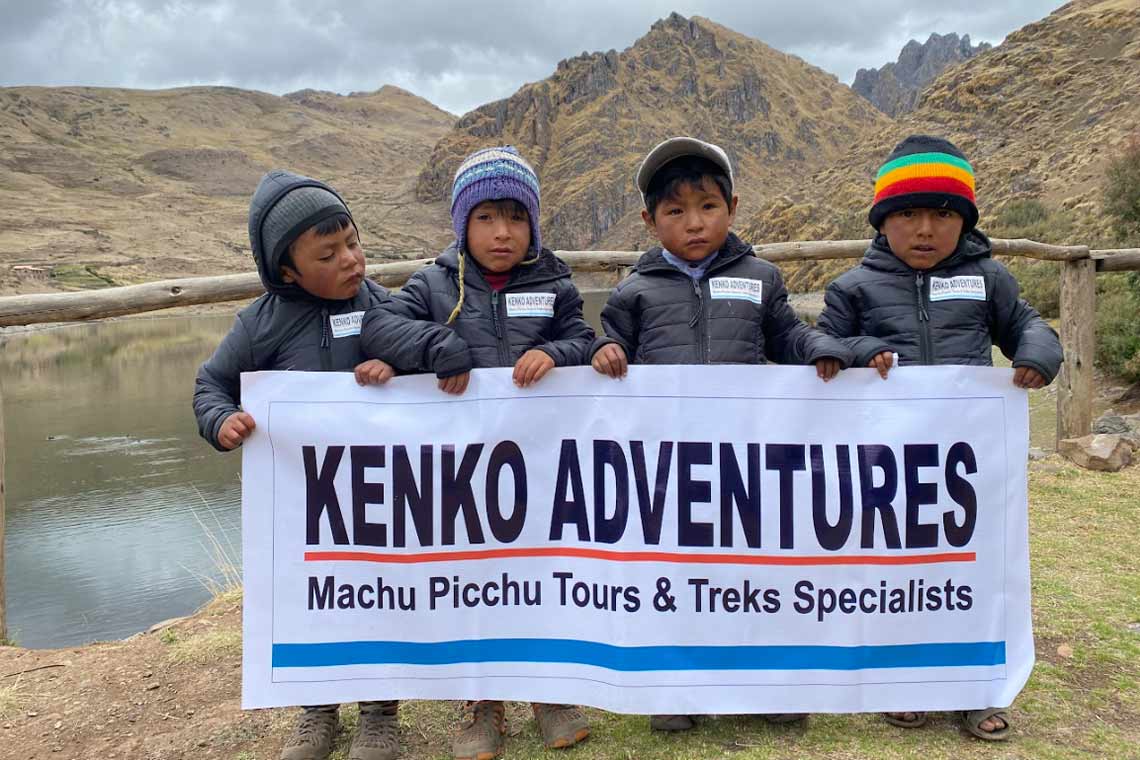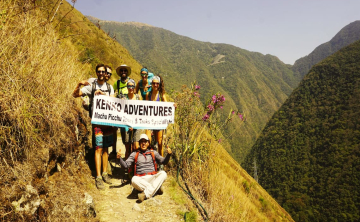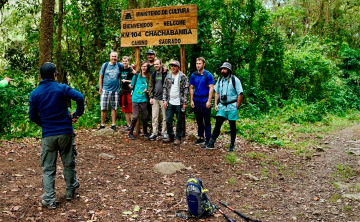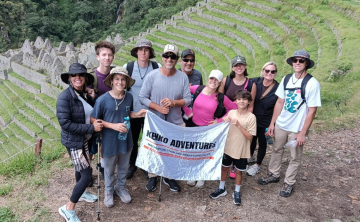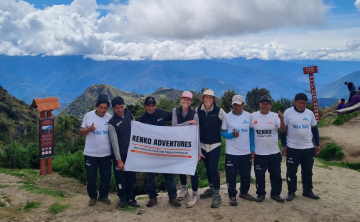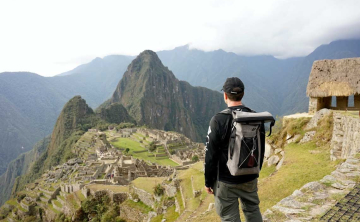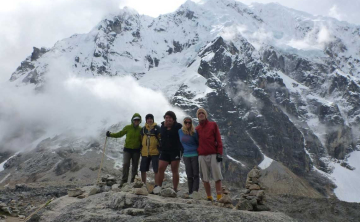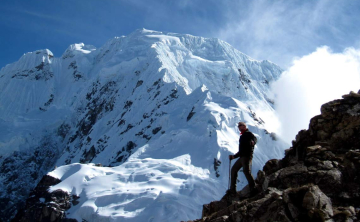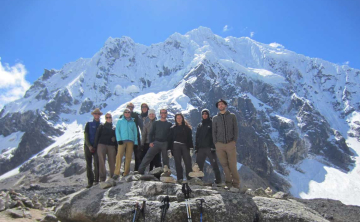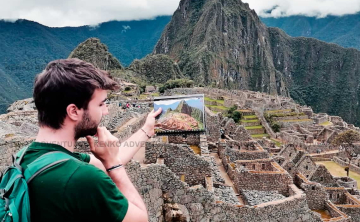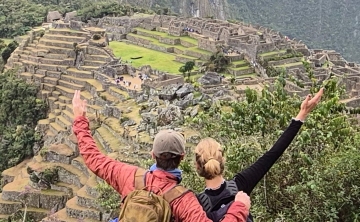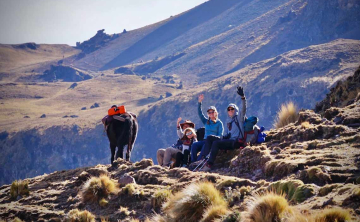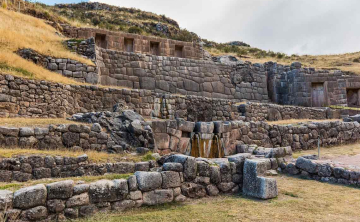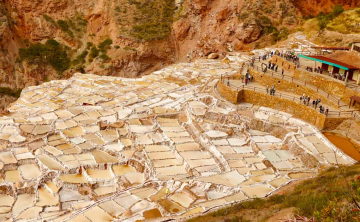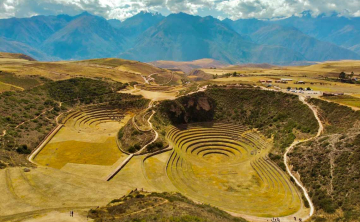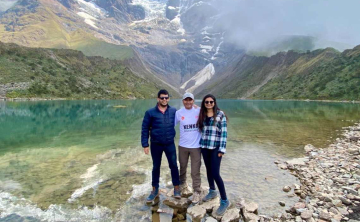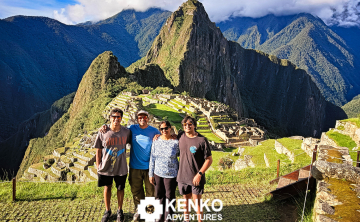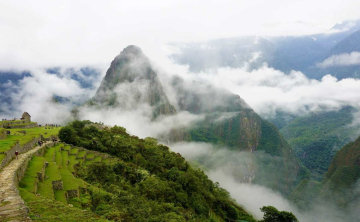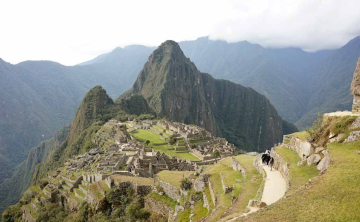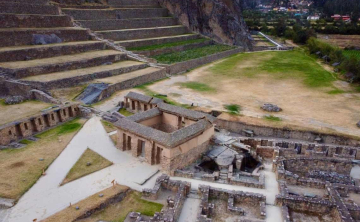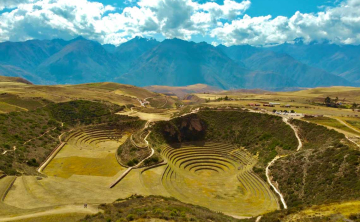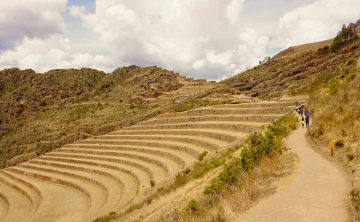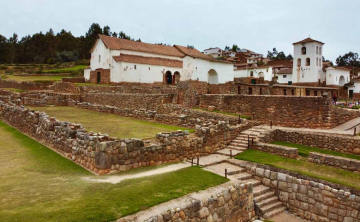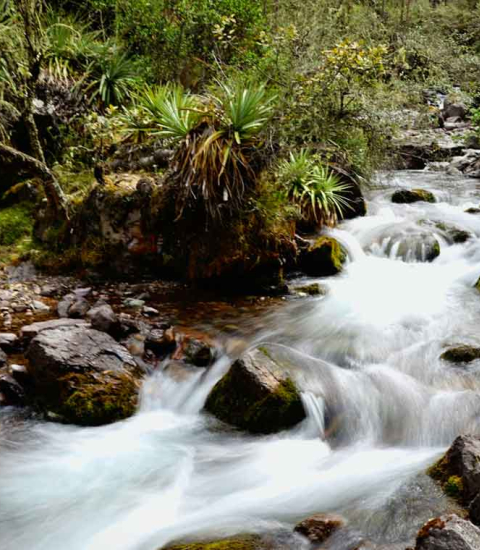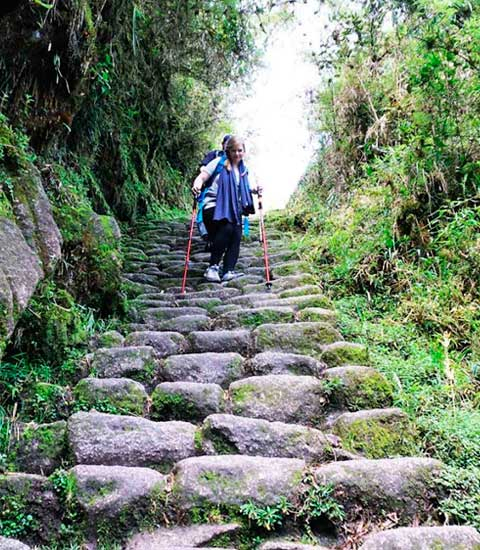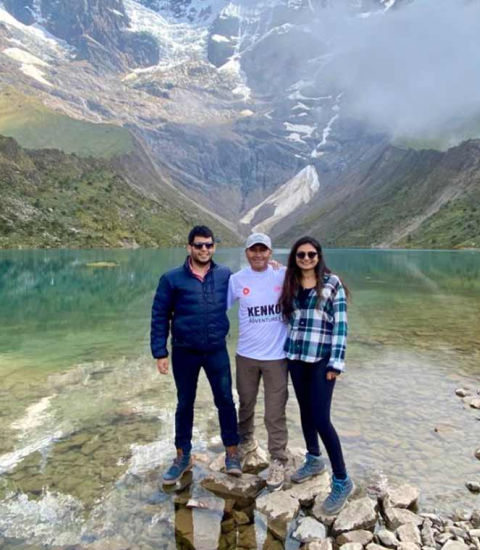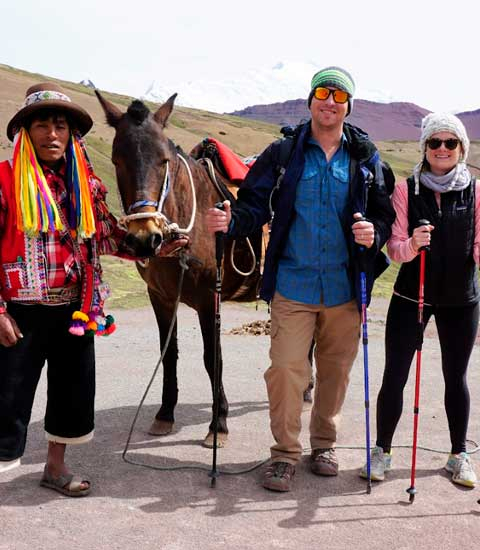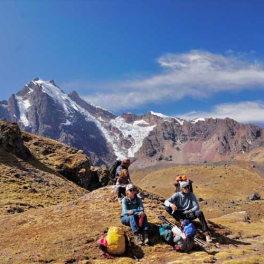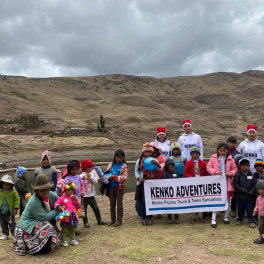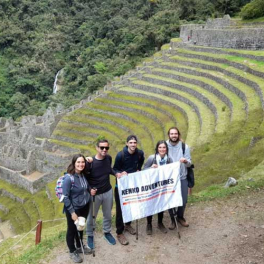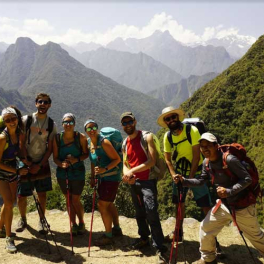Inca Trail Vs Salkantay Trek
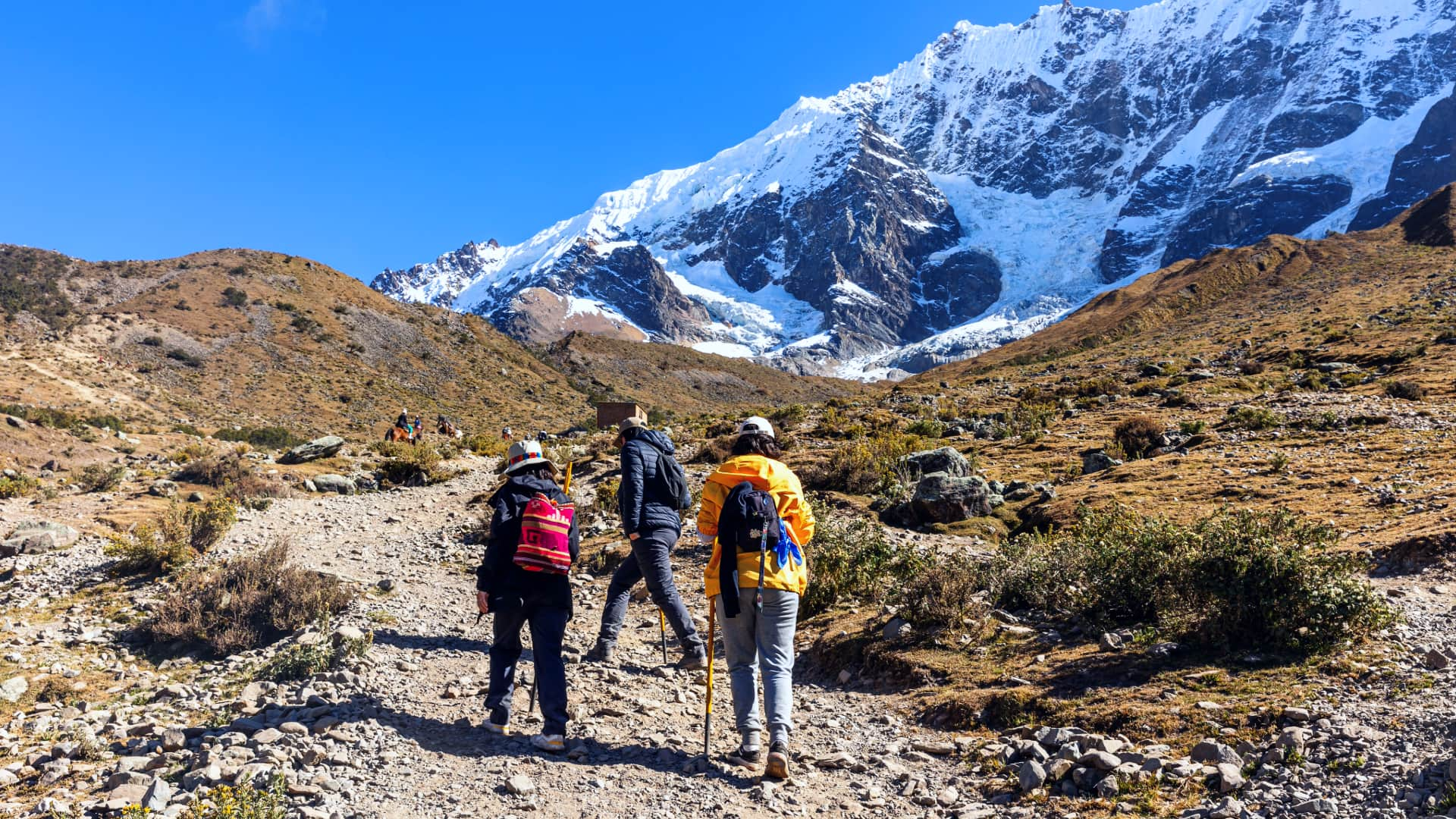
Inca Trail Vs Salkantay Trek: Which one to choose for your Peru Adventure?
If you are planning to travel to Peru and wish to reach the Machu Picchu Historic Sanctuary, you will probably find yourself analyzing two of the most popular trekking routes: the Inca Trail and the Salkantay Trek. While both are incredible experiences that will take you through the most majestic landscapes, ancient history and physical challenges, each will offer you a different experience. In this article we will help you explore the main differences between the Inca Trail vs Salkantay Trek, so you can choose the option that best suits your preferences, time and travel style.
Overview of the Inca Trail vs Salkantay Trek
When comparing inca trail vs salkantay trek, itÔÇÖs important to understand that these routes were created for very different purposes. One is a historic path built by the Incas themselves, while the other is a high-altitude mountain trek designed for adventure and nature lovers.
Both treks eventually lead you to Machu Picchu, but the journey, daily experience and type of connection you build with the landscape vary significantly. Knowing this big-picture difference helps avoid unrealistic expectations.
Why these two routes are the most compared by travellers
The main reason travellers compare the inca trail vs salkantay trek is that both are considered the top trekking alternatives to reach Machu Picchu. They are widely promoted, well-known internationally and offer multi-day hiking experiences.
Another reason is that both routes are physically demanding, which makes travellers want to choose the one that best matches their fitness level and hiking background. Many people only plan to do one major trek in Peru, so the decision feels important.
Finally, online information, forums and travel blogs constantly place these two treks side by side, reinforcing the comparison and making it a natural question for first-time visitors to Cusco.
What kind of experience each trekking offers
The Inca Trail offers a journey deeply rooted in history and archaeology. Walking along original stone paths, visiting ancient ruins and ending at Machu Picchu through the Sun Gate creates a strong cultural and emotional experience.
The Salkantay Trek, on the other hand, focuses more on dramatic landscapes and raw nature. Snow-capped mountains, glaciers, turquoise lakes and wide open valleys define this route.
In short, the inca trail vs salkantay trek comparison often comes down to whether you value historical significance or natural scenery more during your trek.
You might also want to check out: Inca farming methods | The backbone of an empire
Location and natural environment of the inca trail vs salkantay trek
One of the biggest differences between the inca trail vs salkantay trek lies in their geographical setting. Although both are located in the Cusco region, they pass through very different ecosystems and elevations.
Understanding the environment of each trek helps travellers prepare mentally and physically for what they will experience day by day.
Archaeological landscapes and historic paths of the inca trail
The Inca Trail follows a network of ancient paths built by the Incas centuries ago. Along the route, hikers pass through several archaeological sites that were once important ceremonial or administrative centres.
The trail winds through cloud forests, stone staircases and mountain passes, all carefully engineered by the Inca civilisation. This creates a strong sense of walking through living history.
Because of this, the Inca Trail feels structured and purposeful, with cultural highlights appearing regularly along the way.
Mountains, glaciers and wild nature of the salkantay trek
The Salkantay Trek takes hikers into high Andean terrain dominated by massive peaks and glacial landscapes. The star of the route is Mount Salkantay, one of the highest and most sacred mountains in the region.
Unlike the Inca Trail, archaeological sites are minimal. Instead, the focus is on vast open spaces, dramatic altitude changes and untouched natural scenery.
This makes the Salkantay Trek feel more remote and adventurous, appealing to travellers who prioritise nature over history.
Key Differences between the Inca Trail and the Salkantay Trek
When comparing the inca trail vs salkantay trek, travellers are essentially choosing between two very different ways of reaching Machu Picchu. While both routes offer unforgettable experiences, they differ greatly in terms of scenery, difficulty, logistics and the type of connection they create with the Andes.
The Inca Trail is especially appealing to travellers interested in history and culture, as it follows original Inca pathways and passes through several important archaeological sites before reaching Machu Picchu through the iconic Sun Gate. The journey is shorter, highly regulated and designed to preserve both the trail and its historical value.
On the other hand, the Salkantay Trek attracts nature lovers and adventure seekers who prefer wide-open landscapes, high mountain passes and a more rugged experience. With fewer crowds, greater altitude challenges and more flexible booking options, it has become a popular alternative for travellers looking for a less structured but deeply immersive trekking adventure.
Level of difficulty and physical challenge
Difficulty is a key factor when analysing inca trail vs salkantay trek. While both require good physical condition, the type of challenge they present is different.
Knowing how demanding each trek is helps travellers avoid choosing a route that may exceed their physical limits.
Physical demand of the inca trail
The Inca Trail is moderately challenging and involves daily hiking with stone steps, uphill climbs and downhill descents. The highest point, Dead WomanÔÇÖs Pass, reaches around 4,215 metres above sea level.
Although the trail is demanding, it is well-maintained and has a steady flow of hikers, which can make it feel more manageable.
It is suitable for travellers with average fitness who prepare properly and take acclimatisation seriously.
Physical challenges of the salkantay trek
The Salkantay Trek is generally considered more physically demanding. It reaches higher altitudes, with the Salkantay Pass at approximately 4,650 metres.
Longer distances, steeper ascents and exposure to colder weather increase the difficulty level. This trek requires strong endurance and good adaptation to altitude.
For many hikers, the challenge is part of the appeal, making the experience more rewarding.
Which route suits your fitness level better
When comparing inca trail vs salkantay trek, travellers with limited trekking experience often feel more comfortable choosing the Inca Trail.
Those with previous high-altitude hiking experience and a desire for a tougher adventure may prefer the Salkantay Trek.
Ultimately, the right choice depends on honest self-assessment rather than ambition alone.
You might also want to check out: The best snacks while hiking in Peru
Duration and structure of the route
Time is another key element when analysing the inca trail vs salkantay trek, as each route follows a different structure that directly affects the daily rhythm, physical effort and overall trekking experience. The number of days, walking distances and campsite organisation shape how travellers connect with the journey.
Understanding the duration of each trek also helps travellers plan the rest of their itinerary in Peru, including acclimatisation days in Cusco, visits to the Sacred Valley or recovery time after the hike. For many travellers, the length of the trek is just as important as the scenery or difficulty level.
Typical duration of the inca trail
The classic Inca Trail usually takes four days and three nights, following a fixed and well-defined itinerary. Each day has a specific route, scheduled archaeological stops and designated campsites regulated by local authorities.
This structured format ensures a balanced progression, with hiking distances carefully planned to avoid excessive fatigue. The presence of official campsites also provides a sense of order and predictability throughout the trek.
Because of this organisation, the Inca Trail appeals to travellers who prefer a clear schedule, consistent pacing and a guided experience that follows a historical narrative from start to finish.
Duration and variations of the salkantay trek
The Salkantay Trek typically lasts five days, although there are shorter versions for experienced hikers and longer itineraries that include additional scenic attractions. These variations allow travellers to adjust the trek based on their available time and physical endurance.
Unlike the Inca Trail, the Salkantay Trek is less rigid in structure. Daily distances can be longer, and the pace may vary depending on the chosen route and weather conditions. This flexibility adds a sense of adventure but also increases physical demands.
As a result, the days on the Salkantay Trek often feel more intense, especially during high-altitude sections, making it better suited for travellers who enjoy long hiking days and fewer restrictions.
How available time affects the choice
When comparing inca trail vs salkantay trek, travellers with limited vacation time often lean towards the Inca Trail due to its shorter, fixed duration and predictable schedule.
Those who have more days available may prefer the Salkantay Trek, as it allows for a deeper immersion in the Andean landscape and a slower connection with nature.
Ultimately, time flexibility plays a major role in choosing between these two routes, especially for travellers planning a broader itinerary in Peru.
You might also want to check out: The Inca Culture History
Access to Machu Picchu in the inca trail vs salkantay trek
Reaching Machu Picchu is the emotional highlight of both treks, but the way travellers arrive differs significantly. This final approach strongly influences how the entire journey is remembered.
The contrast between a direct, symbolic arrival and a more independent visit shapes the final impression of the trek.
Arrival through the sun gate on the inca trail
The Inca Trail ends at Inti Punku, also known as the Sun Gate. From this viewpoint, hikers get their first panoramic glimpse of Machu Picchu, often at sunrise, after several days of walking ancient paths.
This moment is considered one of the most iconic experiences in Peru, as it mirrors the way the Incas themselves would have approached the sacred city. The emotional impact is heightened by the sense of historical continuity.
For many travellers, this arrival is the defining feature of the Inca Trail experience.
Access to Machu Picchu from the salkantay trek
The Salkantay Trek does not lead directly into Machu Picchu. Instead, hikers finish the trek near the Sacred Valley and travel to the town of Aguas Calientes before visiting the archaeological site.
While this arrival lacks the dramatic reveal of the Sun Gate, it still allows visitors to explore Machu Picchu thoroughly and at a comfortable pace.
The emphasis of the Salkantay Trek remains on the journey itself rather than the final entrance to the citadel.
Differences in the final experience
In the inca trail vs salkantay trek comparison, the Inca Trail stands out for its symbolic and emotional arrival at Machu Picchu.
The Salkantay Trek offers a powerful and rewarding journey through some of the most impressive landscapes in the Andes, followed by a more conventional visit to the site.
Both experiences are unforgettable, but they deliver their impact in different waysÔÇöone through history and symbolism, the other through adventure and nature.
You might also want to check out: Best restaurants in Cusco | Top 20
Recommendations for your hike
Whether you choose the Inca Trail or the Salkantay Trek, proper preparation can make a huge difference in how much you enjoy the experience. Both routes take you through high-altitude environments and demanding terrain, so planning ahead is essential to stay safe, comfortable and fully present during the journey.
The following recommendations apply to both options and are especially useful for travellers doing a multi-day trek in the Andes for the first time.
Book in advance
The Inca Trail operates with a strict permit system and a limited number of daily hikers, which means permits often sell out several months in advance. Planning early is the only way to secure a spot, especially during the high season.
The Salkantay Trek does not require official permits, making it more accessible and flexible. However, availability of camps, guides and transportation can still be limited during peak travel months.
In either case, booking in advance allows better planning, smoother logistics and less stress before the hike.
Acclimatise properly
Spending at least two to three days in Cusco or the Sacred Valley before starting your trek is strongly recommended. This helps your body adapt gradually to the altitude and reduces the risk of altitude sickness.
Skipping acclimatisation can lead to fatigue, headaches and shortness of breath, which can significantly affect your hiking performance and enjoyment.
Proper acclimatisation increases your chances of completing either trek comfortably and safely.
Prepare your equipment carefully
Layered clothing is essential due to sudden temperature changes in the Andes. Early mornings and nights can be cold, while midday hiking can be warm under the sun.
Comfortable trekking shoes with good grip are crucial, as both routes include uneven terrain and steep sections. A light backpack with sunscreen, a hat, insect repellent and rain protection will also make daily hikes more comfortable.
DonÔÇÖt forget items like a headlamp and trekking poles, which can greatly improve stability and comfort during long walking days.
Be in good physical condition
Both treks are physically demanding, regardless of which route you choose. Regular walking, hiking or cardio training before your trip will help build endurance.
If you have little trekking experience, starting light training at least one month before your hike is highly recommended. This preparation can make a noticeable difference on steep ascents and long days.
Good physical condition allows you to focus more on the scenery and less on fatigue.
Hydrate and eat well
Staying hydrated at high altitude is essential. Carry purified water or water purification tablets to avoid dehydration during long hiking days.
Energy snacks such as nuts, dried fruit or energy bars help maintain energy levels between meals. Eating well supports muscle recovery and overall performance.
Proper hydration and nutrition play a key role in maintaining stamina throughout the trek.
Travel with a certified operator
Choosing a reliable and certified tour operator ensures safety, proper equipment and trained guides who understand the terrain and local conditions.
Experienced guides also add value by sharing cultural, historical and environmental insights along the way, enriching the overall experience.
A responsible operator will also prioritise environmental care and sustainable tourism practices.
Respect nature and local guidelines
Both the Inca Trail and the Salkantay Trek pass through fragile natural environments. Following Leave No Trace principles is essential to preserve these areas.
Do not leave trash behind, stay on designated paths and follow your guideÔÇÖs instructions at all times.
Respecting nature ensures that future generations can enjoy these incredible landscapes.
Document your adventure mindfully
Bringing a camera or using your phone to capture memorable moments is part of the experience. The landscapes along both routes offer countless photo opportunities.
However, remember to take time to enjoy the moment without distractions. Connecting with the environment and the journey itself is what makes these treks truly special.
Balancing documentation with presence allows you to create lasting memories beyond photos.
You might also want to check out: 10 Famous mountains in Peru that you should visit
Which route is the best for you?
Opt for the Inca Trail if:
- You prefer to walk along the original Inca trails.
- You want a historical and cultural experience.
- You are determined to book months in advance.
- You want to reach Machu Picchu through the emblematic Sun Gate.
Opt for the Salkantay Trek if:
- You enjoy a deeper contact with nature.
- You prefer a less affluent and more accessible route.
- You enjoy the diverse landscapes, from snow-capped mountains to jungles.
- You want to avoid the need for advance permits.
Either route is wonderful and offers unforgettable rewards. Each has its own charm and challenge. Both routes will give you an unforgettable adventurous experience. So, get ready to explore the heart of the Andes and enter the magic of this iconic site that continues to amaze the world.
Inca trail vs salkantay trek, choose the route that fits your travel style
Ultimately, there's no single best route; it all depends on what you're looking for. The Inca Trail versus the Salkantay Trek: one connects you directly with Inca history and legacy, while the other takes you through rugged landscapes, towering mountains, and offers a more authentic adventure. Both options are absolutely worthwhile if you approach them with the right mindset.
The most important thing is to be well-prepared, take your time to acclimatize, and enjoy the journey at a leisurely pace. It's not just about reaching Machu Picchu; it's about everything you experience along the way: the effort, the views, the camaraderie, and that sense of accomplishment at the end of the day. If you choose the route that best suits you, the experience will be unforgettable, one that stays with you forever.

